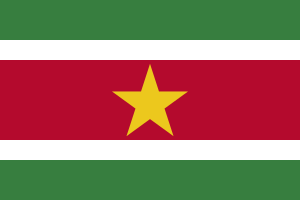Princess Margriet of the Netherlands
Princess Margriet of the Netherlands (Margriet Francisca; born 19 January 1943) is the third daughter of Queen Juliana and Prince Bernhard. As an aunt of the reigning monarch, King Willem-Alexander, she is a member of the Dutch Royal House and currently eighth and last in the line of succession to the throne.[1]
| Princess Margriet | |||||
|---|---|---|---|---|---|
 Princess Margriet (2005) | |||||
| Born | 19 January 1943 Ottawa Civic Hospital, Ottawa, Ontario, Canada (Extraterritorial) | ||||
| Spouse | |||||
| Issue | Prince Maurits Prince Bernhard Prince Pieter-Christiaan Prince Floris | ||||
| |||||
| House | Orange-Nassau | ||||
| Father | Prince Bernhard of Lippe-Biesterfeld | ||||
| Mother | Juliana of the Netherlands | ||||
| Religion | Protestant Church in the Netherlands | ||||
 |
|
|
Extended royal family HRH Princess Irene
HRH Princess Margriet *
|
| * Member of the Dutch royal house |
Princess Margriet has often represented the monarch at official or semi-official events. Some of these functions have taken her back to Canada, the country where she was born de facto, and to events organised by the Dutch merchant navy of which she is a patron.
Birth and Canada
The Princess was born in Ottawa Civic Hospital, Ottawa[2] to Princess Juliana of the Netherlands and Prince Bernhard of Lippe-Biesterfeld. Her mother was heir presumptive to Queen Wilhelmina.
The Dutch family had been living in Canada since June 1940 after the occupation of the Netherlands by Nazi Germany. The maternity ward of Ottawa Civic Hospital in which Princess Margriet was born was temporarily declared to be extraterritorial by the Canadian government.[3][4] Making the maternity ward outside of the Canadian domain caused it to be unaffiliated with any jurisdiction and technically international territory. This was done to ensure that the newborn would derive her citizenship from her mother only, thus making her solely Dutch, which could have been very important if the child had been male, and as such, the heir of Princess Juliana. It is a common misconception that the Canadian government declared the maternity ward to be Dutch territory. Since Dutch nationality law is based primarily on the principle of jus sanguinis it was not necessary to make the ward Dutch territory for the Princess to become a Dutch citizen if the parent is Dutch. Since Canada followed the rule of jus soli, it was necessary for Canada to disclaim the territory temporarily so that the child would not become a Canadian citizen.
Princess Margriet was named after the marguerite, the flower worn during the war as a symbol of the resistance to Nazi Germany. She was christened at St. Andrew's Presbyterian Church, Ottawa, on 29 June 1943. Her godparents included Franklin D. Roosevelt (President of the United States), Queen Mary (Queen dowager of the United Kingdom), Märtha, Crown Princess of Norway, and Martine Roell (lady-in-waiting to Princess Juliana in Canada).[5]
After the war

It was not until August 1945, when the Netherlands had been liberated, that Princess Margriet first set foot on Dutch soil. Princess Juliana and Prince Bernhard returned to Soestdijk Palace in Baarn, where the family had lived before the war.
It was while she was studying at Leiden University that Princess Margriet met her future husband, Pieter van Vollenhoven. Their engagement was announced on 10 March 1965, and they were married on 10 January 1967 in The Hague, in the St. James Church.[6] It was decreed that any children from the marriage would be titled Prince/Princess of Orange-Nassau, van Vollenhoven, with the style of Highness, titles that would not be held by their descendants. Together, they had four children: Princes Maurits (born 17 April 1968), Bernhard (born 25 December 1969), Pieter-Christiaan (born 22 March 1972), and Floris (born 10 April 1975).
The Princess and her husband took up residence in the right wing of Het Loo Palace in Apeldoorn. In 1975 the family moved to their present home, Het Loo, which they had built on the Palace grounds.
Interests and activities

Princess Margriet is particularly interested in health care and cultural causes. From 1987 to 2011 she was vice-president of the Dutch Red Cross, who set up the Princess Margriet Fund in her honour. She is a member of the board of the International Federation of National Red Cross and Red Crescent Societies.
From 1984 to 2007, Princess Margriet was president of the European Cultural Foundation, who set up the Princess Margriet Award for Cultural Diversity in acknowledgement of her work.
She is a member of the honorary board of the International Paralympic Committee.[7]
Titles and styles
- 19 January 1943 – 10 January 1967: Her Royal Highness Princess Margriet of the Netherlands, Princess of Orange-Nassau, Princess of Lippe-Biesterfeld[8]
- 10 January 1967 – present: Her Royal Highness Princess Margriet of the Netherlands, Princess of Orange-Nassau, Princess of Lippe-Biesterfeld, Mrs Van Vollenhoven
Honours
National honours
- Knight Grand Cross of the Order of the Netherlands Lion
- Royal Silver Wedding Medal of Queen Juliana and Prince Bernhard, 1962 (7 January 1962)
- Royal Wedding Medal 1966 (10 March 1966)
- Queen Beatrix Investiture Medal (30 April 1980)
- Royal Wedding Medal 2002 (2 February 2002)
- King Willem-Alexander Investiture Medal (30 April 2013)
Foreign honours
.svg.png)
















.svg.png)






Ancestry
| Ancestors of Princess Margriet of the Netherlands |
|---|
References
- Current line of succession Archived 25 January 2011 at the Wayback Machine – Official website of the Dutch Royal House
- Princess Margriet Archived 12 December 2013 at the Wayback Machine. koninklijkhuis.nl
- "Proclamation". Canada Gazette. 26 December 1942. Retrieved 23 July 2013.
- Second World War – 1943: Netherlands' Princess Margriet born in Ottawa. cbc.ca
- The Gift of Tulips. canadascapital.gc.ca
- Orange Wedding 1967 (video). britishpathe.com
- "Honorary Board". IPC.
- Royal decree of 8 Januari 1937: Besluit betreffende den naam, te dragen door de kinderen van Hare Koninklijke Hoogheid Prinses JULIANA. angelfire.com
- State visit of Chile to Netherlands
- http://www.anp-archief.nl/page/2202482/nl%5B%5D
- S.A.R. Margriet Francisca Principessa dei Paesi Bassi. Quirinale.it. 23 October 1973
- http://www.who2.com/wp-content/uploads/2015/10/rainiaalabdullah-16.jpg
- Getty Images, State visit of Luxembourg to Netherlands, 2006
- www.geheugenvannederland.nl
- Group Photo of the members of the Nepalese and Dutch Royal Family during the state visit
- http://c7.alamy.com/comp/GYXNMD/dutch-queen-beatrix-r-spanish-king-juan-carlos-and-his-wife-queen-GYXNMD.jpg
- Boletín Oficial del Estado
- William & Mary,
External links
| Wikimedia Commons has media related to Princess Margriet of the Netherlands. |
- Royal House of the Netherlands (Dutch)
- CBC Archives – A look at Princess Margriet's birth in Ottawa (from 1992).
Princess Margriet of the Netherlands Cadet branch of the House of Nassau Born: 19 January 1943 | ||
| Lines of succession | ||
|---|---|---|
| Preceded by Countess Leonore of Orange Nassau |
Line of succession to the Dutch throne 8th position |
Last in line |